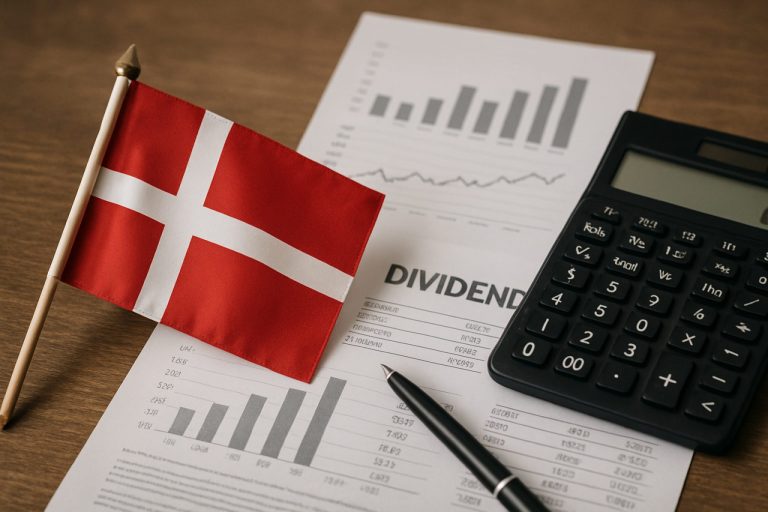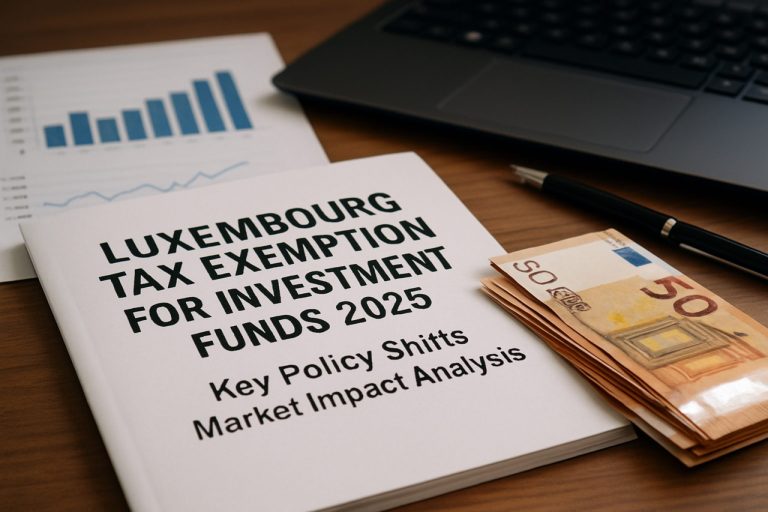
Table of Contents
- Executive Summary: Key Forecasts for Saudi Currency Rates
- Economic Drivers Shaping the Saudi Riyal in 2025
- Monetary Policy and Central Bank Strategies (SAMA Insights)
- Global Oil Prices and Their Impact on Currency Valuation
- Legal, Tax, and Regulatory Considerations for Forex in Saudi Arabia
- Compliance and Reporting Standards: What Businesses Must Know
- Key Statistics: Historic and Current Currency Rate Data
- Scenario Analysis: Best- and Worst-Case Projections Through 2030
- Implications for Importers, Exporters, and Investors
- Expert Opinions and Official Guidance for Future Preparedness
- Sources & References
Executive Summary: Key Forecasts for Saudi Currency Rates
Saudi Arabia’s currency, the Saudi Riyal (SAR), has maintained a fixed exchange rate regime, pegged to the US Dollar at 3.75 SAR/USD since 1986. This peg is central to the Kingdom’s monetary stability and underpins its economic and fiscal planning. As of 2025, all key indicators and policy statements suggest the peg will remain in place for the foreseeable future, with no official moves toward devaluation or a floating regime.
- Exchange Rate Stability: The Saudi Arabian Monetary Authority (SAMA) has repeatedly reaffirmed its commitment to the dollar peg, citing its role in supporting investor confidence, inflation control, and macroeconomic stability. In its latest annual report, SAMA emphasized that the fixed rate remains a cornerstone of monetary policy and economic planning for Vision 2030 initiatives (Saudi Central Bank).
- Legal and Regulatory Backing: The peg is supported by a robust legal framework, including the Monetary Law of 1959, which grants SAMA broad authority to maintain currency stability and enforce compliance in the foreign exchange market (Saudi Central Bank).
- Foreign Reserves and Compliance: As of early 2024, Saudi foreign reserves stood above $440 billion, providing ample coverage (nearly two years of imports) to defend the peg against external shocks. SAMA’s strict compliance and monitoring mechanisms ensure orderly currency markets and deter speculation (Saudi Central Bank).
- Key Statistics: The inflation rate remains low (projected at 2.1% for 2024-2025), and fiscal reforms—including subsidy rationalization and diversification—support long-term currency stability. Oil revenues, while subject to market fluctuations, continue to anchor the government’s balance sheet.
- Outlook for 2025 and Beyond: Barring major external shocks or a fundamental reorientation of policy, the SAR is expected to remain pegged at 3.75 per USD through 2025 and into the next several years. SAMA’s policy direction, reserve adequacy, and legal mandate all support continued stability (Saudi Central Bank).
In summary, no significant currency rate fluctuations are forecast for the Saudi Riyal in 2025. The peg regime, backed by strong reserves and a stable macroeconomic environment, is expected to persist as Saudi Arabia advances its economic transformation agenda.
Economic Drivers Shaping the Saudi Riyal in 2025
The Saudi Riyal (SAR) operates under a fixed exchange rate regime, pegged to the US dollar at a rate of 3.75 SAR/USD since 1986. This longstanding peg provides stability in trade and financial planning, but it also means the Riyal’s value is intrinsically tied to US dollar movements and the Kingdom’s ability to maintain sufficient foreign reserves. The Saudi Arabian Monetary Authority (SAMA), now known as the Saudi Central Bank, oversees the peg and intervenes when necessary to stabilize the currency.
Several economic drivers will play a pivotal role in shaping the performance and outlook of the Saudi Riyal in 2025 and the following years:
- Oil Revenue Volatility: As the world’s largest oil exporter, Saudi Arabia’s fiscal health and foreign currency reserves are heavily dependent on oil prices. In 2023-2024, the Kingdom’s oil receipts remained robust, bolstering reserves above $440 billion USD. However, global energy transition policies and OPEC+ production agreements could introduce new volatility. SAMA’s ability to defend the peg relies on continued healthy reserves and prudent fiscal policy (Saudi Central Bank).
- Vision 2030 Diversification Initiatives: The government’s Vision 2030 plan aims to reduce economic reliance on oil by accelerating investment in non-oil sectors such as tourism, technology, and logistics. Non-oil GDP growth is projected to surpass 5% in 2025, enhancing economic resilience and supporting the Riyal’s stability (Ministry of Finance).
- US Monetary Policy: The US Federal Reserve’s interest rate decisions directly affect the SAR, as SAMA typically mirrors US rate changes to maintain the peg and avoid capital outflows. Expectations for US monetary easing in 2025 could reduce pressure on SAMA to raise rates, supporting domestic credit growth while preserving currency stability (Saudi Central Bank).
- Regulatory and Compliance Developments: SAMA enforces strict compliance and anti-money laundering regulations to maintain international confidence in the Riyal. Continuous updates to banking and foreign exchange regulations help deter speculative attacks and ensure transparency (Saudi Central Bank).
Looking ahead, barring extreme shocks to oil markets or US monetary policy, the Riyal’s peg and exchange rate stability are expected to persist through 2025 and beyond. The Kingdom’s proactive economic reforms and reserve management reinforce its ability to sustain the current currency regime.
Monetary Policy and Central Bank Strategies (SAMA Insights)
Saudi Arabia’s monetary policy is fundamentally shaped by the Saudi Arabian Monetary Authority (SAMA), whose primary mandate is to maintain monetary and financial stability. The Saudi riyal (SAR) has long been pegged to the US dollar at a fixed rate of 3.75 SAR per USD, a policy cornerstone that has endured since 1986. This peg aims to guarantee exchange rate stability, control inflation, and underpin investor confidence, given the Kingdom’s substantial US dollar-denominated oil revenues.
In 2025, SAMA continues its commitment to the US dollar peg, reinforcing predictability in currency rate movements. The peg’s durability is supported by Saudi Arabia’s significant foreign currency reserves, which enable SAMA to intervene in the currency market when necessary to support the fixed exchange rate. As of late 2023, SAMA’s foreign reserves stood at approximately $445 billion, providing a robust buffer for the riyal’s stability (Saudi Central Bank (SAMA)).
Recent regulatory developments and compliance measures further fortify the currency’s stability. SAMA has implemented a risk-based supervision framework for banks and exchange houses, emphasizing anti-money laundering (AML) and counter-terrorist financing (CTF) standards that align with international best practices (Saudi Central Bank (SAMA)). This regulatory environment reduces systemic risk and mitigates volatility that could affect the riyal’s exchange rate.
Key statistics indicate limited short-term volatility for the SAR-USD rate, with forward currency contracts and offshore non-deliverable forwards pricing in minimal deviation from the official peg. Inflation in Saudi Arabia remains moderate, projected to average around 2–2.5% in 2025, while GDP growth is expected to rebound as global oil demand recovers (Saudi Central Bank (SAMA)). These macroeconomic fundamentals support the continued strength and stability of the riyal.
Looking ahead, the outlook for currency rate predictions in Saudi Arabia remains stable for 2025 and the next several years, contingent on sustained oil revenues and prudent fiscal management. While global de-dollarization trends and regional geopolitical risks could present long-term pressures, SAMA’s policy stance and reserve adequacy signal a firm commitment to the current exchange rate regime. Unless there is a severe and sustained external shock, analysts expect the SAR-USD peg to persist as the cornerstone of Saudi monetary policy.
Global Oil Prices and Their Impact on Currency Valuation
Saudi Arabia’s currency, the Saudi Riyal (SAR), is officially pegged to the US Dollar at a fixed rate of 3.75 SAR to 1 USD, a policy maintained since 1986. This peg is a cornerstone of the Kingdom’s monetary policy, designed to provide stability to its import-dependent economy and facilitate international trade, particularly in oil transactions that are overwhelmingly denominated in USD. Accordingly, predictions for the SAR’s exchange rate are less about short-term fluctuations and more about the sustainability of the dollar peg, which is inherently tied to the country’s oil revenues and global oil price trends.
Global oil prices have a direct bearing on Saudi Arabia’s fiscal health. Higher oil prices bolster the country’s foreign reserves, supporting the Central Bank’s (SAMA) capacity to defend the currency peg. Conversely, sustained low oil prices can strain reserves, raising questions about the long-term viability of the peg. As of early 2025, oil prices remain relatively robust, with Brent crude trading between $75–$85 per barrel, largely supporting Saudi fiscal and external balances. The Kingdom’s foreign reserves stood at approximately $445 billion at the close of 2024, a level deemed comfortable for maintaining the fixed exchange rate regime in the near to medium term Saudi Central Bank.
Saudi authorities have repeatedly affirmed their commitment to the dollar peg, emphasizing its role in economic stability and investor confidence. The Ministry of Finance and Saudi Central Bank have not signaled any intention to alter this arrangement, even as the country pursues ambitious economic diversification under Vision 2030. Compliance with the peg is enforced via active intervention in the foreign exchange market and prudent fiscal management, with the government leveraging accumulated reserves during periods of oil price volatility.
Looking ahead to 2025 and beyond, most credible forecasts anticipate the continuation of the peg, barring a dramatic and sustained collapse in oil prices or a major shift in global monetary dynamics. The International Monetary Fund has acknowledged the peg’s appropriateness given Saudi Arabia’s economic structure and ongoing reforms International Monetary Fund. However, the outlook remains sensitive to geopolitical events, OPEC+ production decisions, and the pace of global energy transition, all of which could affect oil revenues and, by extension, the sustainability of the currency regime.
- Key statistics (2024/25): SAR/USD peg at 3.75; foreign reserves ~$445 billion; oil prices $75–$85/bbl.
- Legal & Regulatory: Exchange rate policy anchored by SAMA directives and the Kingdom’s monetary framework.
- Outlook: Stable peg expected through 2025 and near term; risks tied to oil market volatility and global macroeconomic changes.
Legal, Tax, and Regulatory Considerations for Forex in Saudi Arabia
Currency rate predictions in Saudi Arabia for 2025 and the coming years must be closely examined through the lens of the Kingdom’s legal, tax, and regulatory environment. Saudi Arabia’s currency, the Saudi Riyal (SAR), has historically been pegged to the US Dollar at a fixed rate of approximately 3.75 SAR to 1 USD. This peg, in place since 1986, is central to the Kingdom’s monetary policy and stability objectives. The Saudi Central Bank, known as the Saudi Central Bank (SAMA), is the principal authority overseeing currency policy, foreign exchange reserves, and the financial sector’s regulatory compliance.
Legal and Regulatory Framework: The exchange rate peg is supported by explicit monetary policy decisions and is reinforced through various regulatory instruments. SAMA holds significant foreign reserves—over $400 billion as of early 2024—to defend the peg and maintain investor confidence. SAMA regulates banks and licensed foreign exchange dealers under the Banking Control Law and the Finance Companies Control Law, ensuring compliance with anti-money laundering (AML) and counter-terrorist financing (CTF) standards. The Saudi Central Bank (SAMA) regularly updates these regulations in alignment with international best practices.
Taxation and Compliance: Saudi Arabia does not levy taxes on forex trading profits for individuals; however, institutional participants and financial service providers are subject to zakat, value-added tax (VAT), and other applicable taxes according to the Zakat, Tax and Customs Authority. Compliance with reporting obligations and anti-evasion laws is strictly enforced, particularly for cross-border transactions and large capital movements. The Kingdom’s adherence to international FATF standards is reflected in its regulatory framework for currency transactions.
Key Statistics and Market Outlook: With the Riyal’s peg to the US Dollar, currency rate fluctuations are minimal under normal circumstances. The 2025 outlook suggests continued stability, supported by robust foreign reserves and fiscal discipline. According to Saudi Central Bank (SAMA) data, foreign reserves as of March 2024 provide ample buffer against external shocks. However, external factors such as US interest rate policy, global oil prices, and geopolitical developments remain relevant to risk assessments.
- Major reforms under Vision 2030 may drive capital flows, but SAMA’s commitment to the peg remains resolute.
- Regulatory amendments are expected to focus on transparency, anti-fraud measures, and fintech integration to support the financial sector’s development.
- Short- to medium-term currency rate predictions point to continued SAR-USD stability unless significant macroeconomic shocks occur.
Overall, the legal, tax, and regulatory environment in Saudi Arabia underpins a stable currency outlook for 2025, with the Saudi Central Bank’s policies and compliance frameworks playing a decisive role in maintaining the Riyal’s peg and investor confidence.
Compliance and Reporting Standards: What Businesses Must Know
Saudi Arabia maintains a highly regulated currency environment, with the Saudi riyal (SAR) pegged to the US dollar at a fixed rate of 3.75 SAR per USD. This peg, established in 1986 and reaffirmed in subsequent decades, underpins a predictable exchange rate regime, critical for business planning and financial reporting. The Saudi Arabian Monetary Authority (SAMA)—now the Saudi Central Bank—oversees monetary policy and ensures the stability of the currency. Businesses operating in or with Saudi Arabia must adhere to national compliance and reporting standards concerning foreign exchange transactions, risk disclosures, and financial statements.
Key compliance regulations stem from the Saudi Central Bank and the Capital Market Authority. The Foreign Exchange Law stipulates mandatory licensing for entities conducting currency exchange activities and sets reporting requirements for large or suspicious transactions. The Anti-Money Laundering Law also obligates timely and accurate reporting of cross-border transfers, with penalties for non-compliance.
In terms of financial reporting, all companies must follow International Financial Reporting Standards (IFRS), as mandated by the Saudi Organization for Chartered and Professional Accountants (SOCPA). IFRS requires businesses to use the closing exchange rate for monetary items and the historical rate for non-monetary items when preparing consolidated financial statements. For forward-looking assessments, companies are expected to disclose exchange rate risks and sensitivities in their annual reports.
For 2025 and the coming years, the outlook is for the riyal to remain firmly pegged, as reiterated by SAMA in its recent monetary policy statements. Saudi Arabia’s substantial foreign reserves—over $440 billion as of Q1 2024—support the peg, limiting the scope for major currency volatility. Businesses, however, must monitor global macroeconomic pressures, oil price fluctuations, and US monetary policy, as these could indirectly affect the riyal’s stability or liquidity conditions. The ongoing implementation of Vision 2030 and potential moves to liberalize parts of the financial sector may bring incremental regulatory updates, but no official statements indicate a change to the peg in the near term (Saudi Central Bank).
- Maintain up-to-date internal compliance policies aligned with SAMA and SOCPA standards.
- Monitor official SAMA bulletins for regulatory changes or currency policy updates.
- Ensure accurate, timely reporting of foreign currency transactions in accordance with IFRS.
- Disclose material currency risks and sensitivity analyses in financial statements.
In summary, while the SAR/USD peg provides exchange rate stability, Saudi businesses must remain vigilant in their compliance and reporting practices given the evolving regulatory environment and global financial dynamics.
Key Statistics: Historic and Current Currency Rate Data
Saudi Arabia’s currency, the Saudi Riyal (SAR), has historically maintained a stable exchange rate, primarily due to its longstanding peg to the US Dollar (USD). This fixed exchange rate regime has been in effect since 1986, with the SAR tightly pegged at approximately 3.75 SAR to 1 USD. The Saudi Central Bank (SAMA) reaffirms its commitment to this policy, emphasizing monetary stability and predictability, which are crucial for trade and investment.
Recent data from the Saudi Central Bank (SAMA) shows that the exchange rate has remained virtually unchanged throughout 2023 and into the first half of 2024, consistently hovering at 3.75 SAR per USD. Periodic fluctuations are minor and typically within very narrow bands, as SAMA actively intervenes in the foreign exchange market to uphold the peg.
- Exchange Rate Consistency: As of Q2 2024, the official rate remains 3.75 SAR/USD. SAMA’s foreign exchange reserves, which exceeded SAR 1.6 trillion in early 2024, provide a substantial buffer to maintain this peg.
- Other Currency Pairs: Exchange rates against other major currencies (such as EUR, GBP, and JPY) have fluctuated in line with USD movements, as tracked by SAMA’s published rates and historical tables.
- Inflation: The General Authority for Statistics reported that inflation in Saudi Arabia has remained moderate, with annual rates around 2-3% in recent years. This has reinforced the effectiveness of the fixed exchange rate policy in anchoring inflation expectations.
- Monetary Policy: SAMA typically mirrors the US Federal Reserve’s interest rate decisions to support the currency peg and control liquidity, as detailed in its quarterly monetary policy reviews.
Looking forward to 2025 and the coming years, official statements and published statistics indicate continued commitment to the currency peg. While global economic uncertainty and shifting oil revenues present external pressures, Saudi Arabia’s robust reserve position and prudent fiscal management provide strong support for the Riyal’s stability. In summary, current and historic data highlight remarkable currency rate stability in Saudi Arabia, underpinned by clear policy direction and substantial financial reserves.
Scenario Analysis: Best- and Worst-Case Projections Through 2030
Saudi Arabia’s currency regime is characterized by the Saudi Riyal’s (SAR) long-standing peg to the US Dollar (USD) at a fixed rate of 3.75 SAR per USD, which has been maintained since 1986. This peg provides significant currency stability and is a cornerstone of the Kingdom’s monetary policy, overseen by the Saudi Central Bank (SAMA). However, global macroeconomic shifts, regional developments, and domestic policy reforms necessitate scenario-based analysis to assess risk and resilience through 2030.
- Best-Case Scenario: The continuation of prudent fiscal management, robust non-oil sector growth under Vision 2030, and sustained foreign reserve buffers reinforce confidence in the currency peg. Under this scenario, Saudi Arabia benefits from diversified revenue streams, including increased foreign direct investment and expansion of the private sector. High oil prices, effective subsidy reforms, and a growing sovereign wealth fund—managed by the Public Investment Fund (PIF)—support a stable balance of payments and ample reserves. SAMA’s latest monthly bulletin indicates reserves exceeding $440 billion as of early 2024, well above the IMF-recommended adequacy levels, allowing the peg to hold firm through 2030 with minimal speculative pressure (Saudi Central Bank).
- Worst-Case Scenario: A sustained drop in global oil prices, combined with slower progress on economic diversification and increased fiscal pressures, could erode confidence in the fixed exchange rate regime. Declining reserves—falling below six months of import coverage—and persistent fiscal deficits could prompt market speculation about a possible devaluation or adjustment of the peg. Heightened geopolitical risks or global financial tightening could exacerbate capital outflows. While SAMA’s regulatory framework and macroprudential policies provide buffers, a severe shock could force authorities to consider managed flexibility in the currency regime, though this remains a low probability scenario given current reserve levels and government commitment (Saudi Central Bank).
From a legal and compliance perspective, maintaining the peg is supported by robust financial sector regulations, anti-money laundering (AML) standards, and capital controls under SAMA’s supervision. The government’s legal framework for currency management is codified under the Saudi Arabian Monetary Law, which grants SAMA authority over exchange rate policy and reserve management.
Looking toward 2030, the outlook is for continued currency stability, provided current policy discipline and economic diversification persist. Short-term volatility may arise from global shocks, but the peg’s durability remains underpinned by legal, regulatory, and reserve buffers. The probability of a major currency adjustment remains low barring extraordinary external shocks.
Implications for Importers, Exporters, and Investors
The currency rate environment in Saudi Arabia, characterized by the long-standing peg of the Saudi Riyal (SAR) to the US Dollar (USD) at a fixed rate of 3.75 SAR/USD, provides a unique set of implications for importers, exporters, and investors operating in or with the Kingdom. As of 2025, the Saudi Arabian Monetary Authority (SAMA), now known as the Saudi Central Bank, continues to reaffirm its commitment to the currency peg, citing its role in economic stability and investor confidence (Saudi Central Bank).
- Importers: The fixed exchange rate regime offers predictability in the cost of imported goods and services, especially those priced in USD or currencies closely linked to the dollar. This stability reduces hedging costs and exchange rate risk for Saudi importers. However, shifts in global dollar strength can affect the relative price competitiveness of imports from non-dollar economies, especially as global monetary policy tightens.
- Exporters: Saudi exporters benefit from stable pricing for oil—Saudi Arabia’s major export—since oil is traded in USD globally. Non-oil exporters, however, may experience competitive challenges if non-dollar currencies weaken significantly; their goods become relatively more expensive in those markets. The government’s Vision 2030 aims to diversify exports, making currency competitiveness an increasing focus for non-oil sectors (Vision 2030).
- Investors: For foreign investors, the currency peg and capital control policies add a layer of certainty, minimizing the risk of currency depreciation. The Saudi Central Bank maintains substantial foreign reserves—$444 billion as of early 2024—to defend the peg if necessary (Saudi Central Bank). However, investors should monitor global energy markets and US monetary policy, as both impact reserve levels and domestic liquidity.
Looking ahead, the outlook for the Saudi Riyal’s exchange rate stability in 2025 and the coming years remains strong, barring severe external shocks such as a sustained drop in oil prices or geopolitical instability. Regulatory compliance for currency transactions remains robust, with ongoing oversight from the Saudi Central Bank and requirements under anti-money laundering (AML) and counter-terrorism financing (CTF) regulations (Saudi Central Bank). Barring extraordinary events, the pegged regime is likely to persist, supporting continued stability for cross-border trade and investment decisions.
Expert Opinions and Official Guidance for Future Preparedness
Saudi Arabia’s currency, the Saudi Riyal (SAR), has been firmly pegged to the US Dollar (USD) at a rate of 3.75 SAR per USD since 1986, a policy maintained by the Saudi Central Bank (SAMA) to ensure economic stability and investor confidence. As the Kingdom advances its Vision 2030 diversification agenda and navigates global economic shifts, currency rate predictions for 2025 and the ensuing years remain underpinned by this longstanding currency peg.
Expert Opinions: Regional financial authorities and leading economists widely consider the Riyal’s dollar peg to be a cornerstone of Saudi Arabia’s monetary policy. The Saudi Central Bank has repeatedly reaffirmed its commitment to the fixed exchange rate, citing its role in mitigating volatility from oil price fluctuations and supporting foreign investor confidence. Official statements in 2024 and early 2025 emphasize that, barring unprecedented external shocks, the peg will remain intact in the foreseeable future.
Legal and Compliance Framework: The monetary and banking law of Saudi Arabia grants SAMA the sole authority to manage and regulate the currency exchange rate and reserves. SAMA maintains robust foreign currency reserves—above $400 billion in recent years—which serve as a powerful buffer to defend the peg against speculative pressures or external imbalances (Saudi Central Bank). Additionally, strict anti-money laundering and capital controls are enforced to prevent destabilizing capital flows, reflecting compliance with global standards set by the Financial Action Task Force (FATF).
Key Statistics and Events:
- As of Q1 2025, SAMA’s net foreign assets stood at $445 billion, providing ample support for the currency peg (Saudi Central Bank).
- Annual inflation remains below 3%, and the current account balance is forecast to stay positive through 2026, aided by strong oil revenues and non-oil sector growth (Ministry of Finance).
- No official plans to re-peg or float the Riyal have been announced, and policy guidance reiterates confidence in the existing regime.
Outlook and Official Guidance: The consensus among Saudi monetary authorities is that the current exchange rate regime will continue to anchor economic stability through 2025 and beyond. SAMA’s policy tools, financial reserves, and regulatory oversight are calibrated to withstand external economic shocks. Businesses are advised to align their currency risk management and compliance protocols with the prevailing peg, while monitoring official releases for any updates on monetary policy (Saudi Central Bank).



